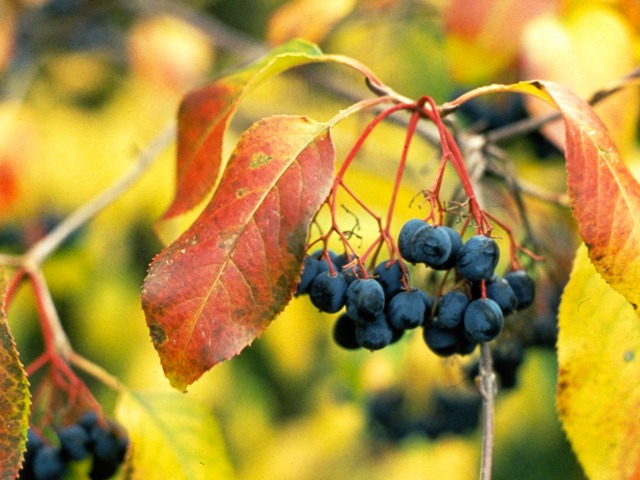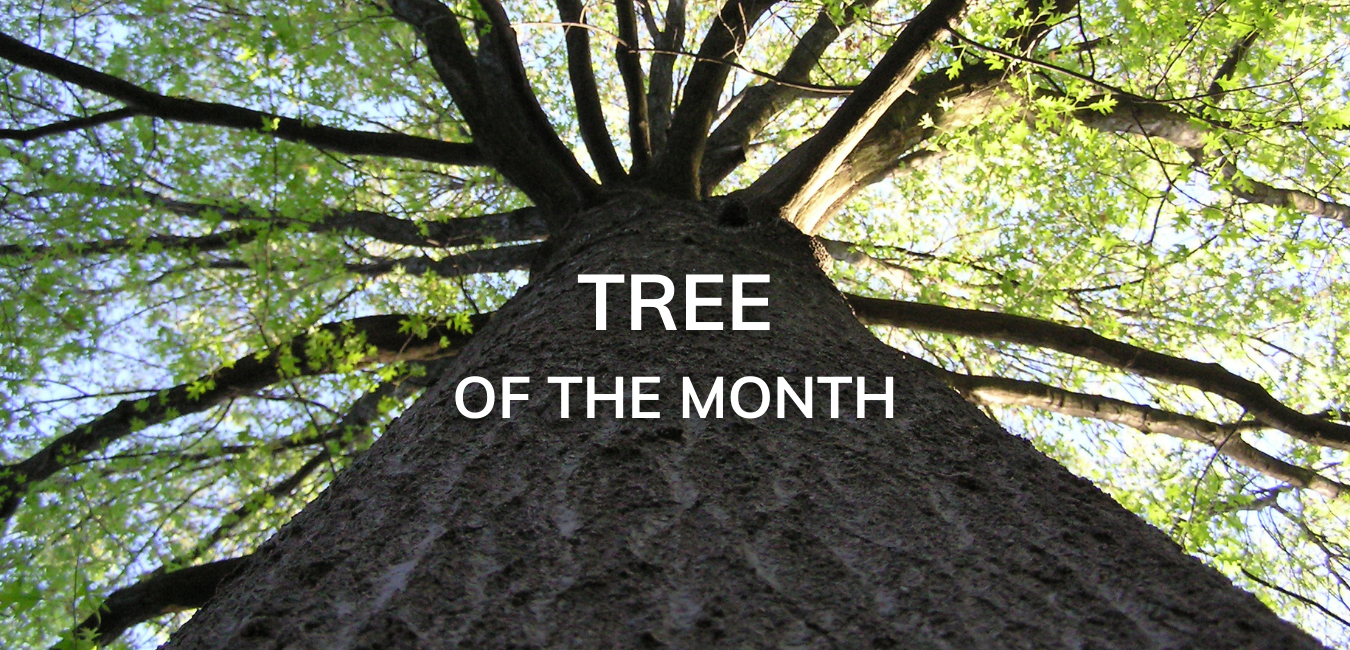
Also known as Sheepberry and Sweet Viburnum, the nannyberry is found from Saskatchewan to Quebec and New Brunswick in Canada, and from the north central to eastern U.S. Generally reaching a height of 14 to 18 ft, it can grow to about 36 ft. In the wild, this smaller tree or multi-stem shrub is usually found in small, open colonies. It grows in moist areas with rich loam to clay-loam soil, such as riverbanks, the edges of woodlots, and along swamp borders, but it can tolerate drier sites like open fields. It is adaptable to a wide range of locations. Although shade-tolerant, the nannyberry tends to grow larger in more open areas.
Its leaves are about 2-4” (5–10 cm) long and are elliptical with finely toothed margins. Its mature foliage is dark glossy green on the topside, and pale green with tiny black dots beneath. The leaves turn a deep maroon to red orange in the fall. The bark is reddish-brown or grey, and it’s furrowed into scaly platelets. In May to June, small, five-petalled, creamy-white flowers appear, in dense round- to flat-topped clusters. Elliptical green, ½-inch long berry-like fruits (drupes) develop shortly after hanging in clusters of 15 to 30. As they ripen, they turn a blue-black and have the appearance of a whitish coating. Inside each berry is a flat seed with a ridge running along the middle, which is a main identifiable feature.
The nannyberry plays an important role in the wild. The ripe fruit are sweet and edible and are an important food source for many small mammals and birds, and they stay on the shrub well into the winter. Additionally, the shrubs form thickets that provide cover for wildlife in all seasons.
Although not found widely in some areas of its range, the nannyberry is often chosen for gardens and landscaping in urban areas. Its fibrous roots make for easy transplanting. In cities, it is often used in shrub borders, hedges, and windbreaks.
References
http://ontariotrees.com/main/species.php?id=2062
https://plants.usda.gov/factsheet/pdf/fs_vile.pdf
https://nature.mdc.mo.gov/discover-nature/field-guide/nannyberry
https://www.lakeforest.edu/academics/programs/environmental/courses/es204/viburnum_lentago.php
https://apps.carleton.edu/campus/arb/management/garden/native/nannyberry/
Image Source: Ontario Native Plants


